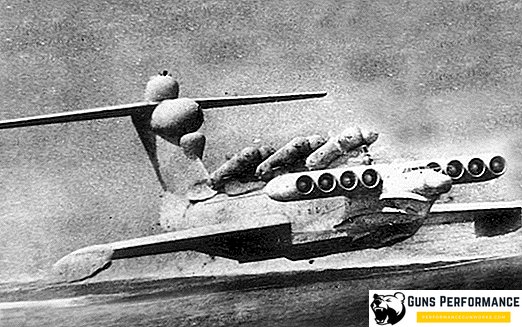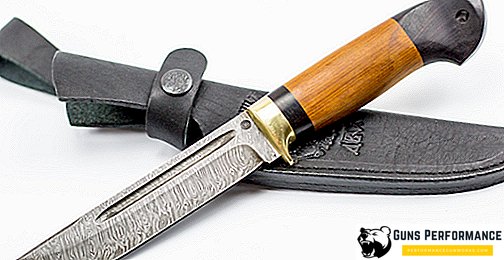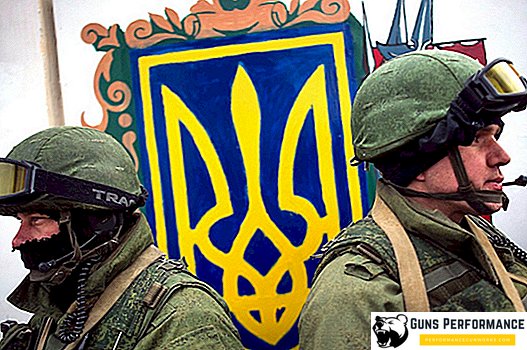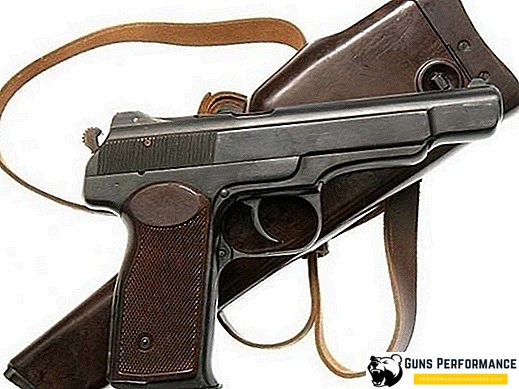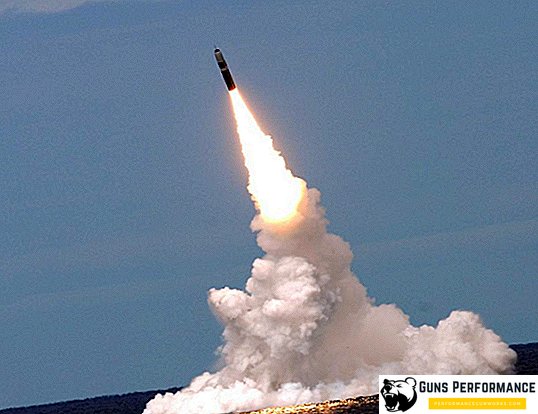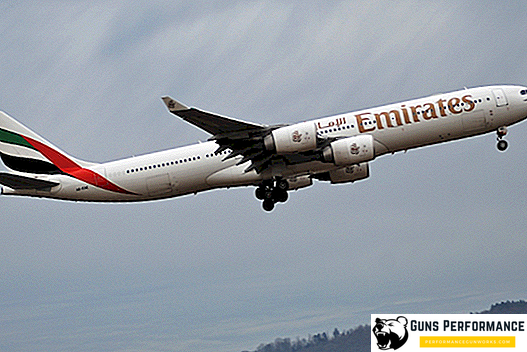ZIL-4104 7.7 V8 Pullman - Soviet executive class car, which was used by the first person of the state. The creation and release of engaged plant named Likhachena. Production began in 1978 and lasted 5 years. Initially, the car was given the index "115", but then, due to the change of the classification system in the USSR, it was assigned the number "4104". The release of modifications developed on the basis of this car lasted until 2002.

History ZIL-4104
4104 replaced the 114th model, which had a huge technical potential and could work for many more years. The need to create a new car arose because of the change of fashion in the automotive industry. The design of transport began in 1974, when they created the first plasticine model. The basis was planned to put a forced power unit from the ZIL-114. The lower camshaft was replaced by two upper, thanks to which the power increased to 315 horsepower.
The final design was prepared for 1977. The central part of the appearance was the grille. It gives the car elegance, severity and heaviness. Wheel arches decorated with chrome lining. Interior design required luxury and expensive materials, as it was moved by top officials of the USSR. The first tests were carried out at the beginning of 1978, after which in October of the same year the first copies were collected, which already received the index "4104".
The model was the last one, which was personally used by General Secretary L.I. Brezhnev. For 5 years, the company released 106 copies. Until 2002, collected several more improved modifications, so the total release of the family has about 200 cars. Species had only external differences, the technical equipment remained unchanged.

Device and technical characteristics of ZIL-4104
Specifications:
- Capacity - 7 people;
- Length - 6.3 meters;
- Width - 2.1 meters;
- Height - 1.5 meters;
- Wheelbase - 3.88 meters;
- Clearance - 17 centimeters;
- Weight - 3.9 tons;
- Engine - carburetor;
- The volume of the power unit - 7.7 liters;
- The power plant capacity - 315 horsepower at 4-4,6 thousand rpm;
- Transmission - automatic;
- Maximum speed - 190 km / h;
- Acceleration to 100 km / h - 13 seconds;
- Average fuel consumption - 22 liters per 100 km;
- Tank capacity - 120 liters.
Closed metal body is equipped with four doors. Designed for the transportation of seven people. The back and front rows are separated from each other by a wall with a glass partition. Middle seats can be folded back. Comfortable conditions are achieved by air conditioning, heating and ventilation. An additional element is considered an all-wave stereo radio, as well as power windows. To participate in parades and holidays have developed a modification of the open type (41044).

Engine
The power plant is powered by gasoline, equipped with eight cylinders arranged in a V-shape. With 4-4,6 thousand rpm, the maximum power of 315 horsepower is achieved. To reduce the mass of transport, the head and the cylinder block are made of durable aluminum. Each block has one overhead camshaft, which operate at the expense of a two-row roller chain. Each cylinder has two valves with gap hydrojackers.
The ZIL-4104 engine works together with a four-chamber carburetor and two electric fuel pumps. There are two oil cooler. One works from the cooling system of the car, the other - from air cooling. For the ignition system selected transistor type.
Automatic transmission
The automatic transmission is complemented by a torque converter and has three gears. To change the steps used selector switch located between the front seats. The design of the gearbox has a mechanical stopper to keep the car on the way down. Deactivates automatically when driving. Two drive shafts are separated by an intermediate support. The rear axle is a continuous die-welded beam. The main transmission of the hypoid type has a gear ratio of 3.62 or 3.31. To install the wheel hub used tapered roller bearings.

Suspension
The welded frame consists of stamped spars and crossmembers. Independent plain-type front suspension mounted on wishbones. The softness and smoothness of movement achieved by elastic torsions, which are placed along the frame. To prevent vibrations and vibrations from uneven pavements, telescopic shock absorbers are included in the device. The rear suspension is represented by longitudinal semi-elliptical low leaf springs of great length. The width of one sheet is 7.5 centimeters, and the thickness is 8 millimeters. Between the sheets are polyethylene pads, which also reduce vibrations and vibration when moving along an uneven surface. The design of springs is supplemented with jet rods. Welded wheels have a deep rim. To connect to the hubs use C-studs. Tubeless tires have a size of 9.35-15.
The steering mechanism consists of two main parts:
- Screw with nut on circulating balls;
- Rail with toothed sector.
Gear ratio - 17.5. To reduce the efforts of the driver on the steering wheel when cornering, power is introduced. It is powered by a vane pump, which is placed on the toe of the engine crankshaft. The position of the steering wheel is adjusted relative to the driver's position.
Brakes
The brake system is represented by disc mechanisms on all wheels. It is complemented by a hydraulic drive and automatic clearance adjustment. The device has an internal cooling system. Consists of two contours. Each circuit has an effect on all wheels. Each circuit has a vacuum booster, it is also equipped with a master cylinder. The parking brake is represented by a drum mechanism on the rear wheels. It is activated by pressing the pedal. After the start of the movement, the parking brake automatically turns off.
Electrical equipment is powered by a 12-volt system. It works at the expense of the generator, issuing a power of 1.15 kW, and two batteries (120 A.ch. each.). To improve the illumination of the road in the dark or in bad weather conditions, front and fog lights equipped with halogen lamps.

Modifications ZIL-4104
On the basis of a limousine Likhachev plant engineers have developed several modifications.
41041 Sedan
In 1986, a shortened version of the limousine, designed for five people. It belongs to the category of sedans. The wheelbase was shortened to 3.3 meters. This contributed to a weight loss of up to 3.2 tons. According to official documents, the production of these cars is not completed, but the last time the cars were assembled in the late 90s were commissioned by the Moscow City Hall. In total, from 1986 to 2000, 26 cars were produced.

41042 "Black Doctor"
The 114th generation showed the success of the government motorcade's medical cars, so they began to develop medversion in parallel with the classic limousine. The standard color is black (hence the name “Black Doctor”). The main task of the car is not to stand out against the background of other units of the tuple. To do this, the crew doctors were forbidden to wear white coats. On board there is no specialized equipment for operations. Purpose 41042 - delivery of a high-ranking person to the hospital in case of health problems.
The car is designed for the driver, guard, bed patient and three doctors. The station wagon body is longer than that of a limousine, and there is a superstructure on the roof, so that doctors can comfortably deploy the work of medical equipment during first aid. In many instances, the rear door consisted of two sections: one leaned down, the other up. The medical vehicle, made on the base 41047, was equipped with a single-section tailgate that swung up. Trim fit the limousine, medical stretcher made from genuine leather.
41043
Special purpose vehicles. Used to organize special communications. For this "on board" there is a shielded electrical system and a parabolic antenna of government communications.

41044 Phaeton
In 1981, a modification appeared that was planned to be used in parades on Red Square. Vehicles are equipped with an automatic roof folding system, which takes no more than 20 seconds. The wheelbase was shortened to 58 centimeters, left two doors and one seat for the driver. Instead of a passenger seat, a cabinet was installed with a handrail for the performance of high-ranking officials at the parade. Designers collected three copies.
Participation in parades of this variety took until 2009. The program was attended by two copies. On one, the parade leader moved, on the other, the RF Minister of Defense. The third car was used as a backup in case of unforeseen circumstances. At the moment, all three phaetons are in working condition and are listed as part of the transport of the Ministry of Defense of the Russian Federation.

41045
Classic limousine with minor changes in appearance. The release began after the appointment of a new General Secretary in 1983, continued until 1985. With the wheel arches removed lining, moldings with thresholds moved to the door. The design of the radiator grille has been updated, the rear and front headlamps have been replaced, as well as several other minor changes. The overall concept of the classic version is preserved.
41046
Improved transport option for special communication. Shielded equipment "Caucasus" ahead in all respects the previous generation. It is used in government vehicles these days.

41047
In 1985, another change of government was held, which led to the emergence of a new premium limousine. The headlights got a rectangular shape, the design of the radiator grille was renewed again, the turn signals were installed on the ends of the wings. The front doors were deprived of pivoting windows. Rear-view mirrors were placed in a new building and changed the place of attachment: they were moved from the door to the corner of the window. In addition to external changes, we made several technical measures in order to meet modern environmental standards. The motor received a contactless starting mechanism. In 1988, they changed the design of the transmission, which led to an improvement in its quality and an increase in the working resource stock.
The wheels were 16-inch, and the tires increased in width. Special development "Granit" allowed to move when the wheel depressurization. This is achieved by the rigid sidewalls of the tire. One wheel remained operational even after seven bullet hits. During the years of production it became the longest serial car in the world. The latest copy was collected in 2002 for the president of Kazakhstan. 41047 was the last Russian-made limousine. After the collapse of the USSR, officials moved to foreign cars.

4105 "Bronecapsule"
Armored version. The design was lined up around the armored capsule (carrying a volume of complex configuration). Armored vehicles were produced on the base of 4104, 41045 and 41047. Armored capsules were assembled in Kurgan. The company received an order for the release of 25 armored capsules. Two of them spent on fire tests. The thickness of the armored body was 4-10 millimeters. The glasses had an increased thickness to protect the driver and passengers from shots. The gas tanks also had a scientific approach: they were taught to samozatygivatsya with bullet hits, as well as to resist ignition. The plant named after Likhachyov collected 14 copies of this version.

41072 "Scorpion"
In 1989, created the "Scorpion", which used to move the members of the government guards. In the cabin there are handrails for easy fire from the windows. Also for emergency situations used a sunroof. For firing chairs can be rotated in the right direction. The car is equipped with a mechanism for instantly opening the rear window. Total collected 8 copies.

What can be concluded?
ZIL-4104 - the top of the domestic automotive industry. He embodied not only the standard of comfort and beauty (transport competed with the representatives of the premium class Cadillac and Rolls Royse), but also technical excellence and reliability. Buy this car is now impossible. The remaining copies are on the state account or in private collections of motorists.



